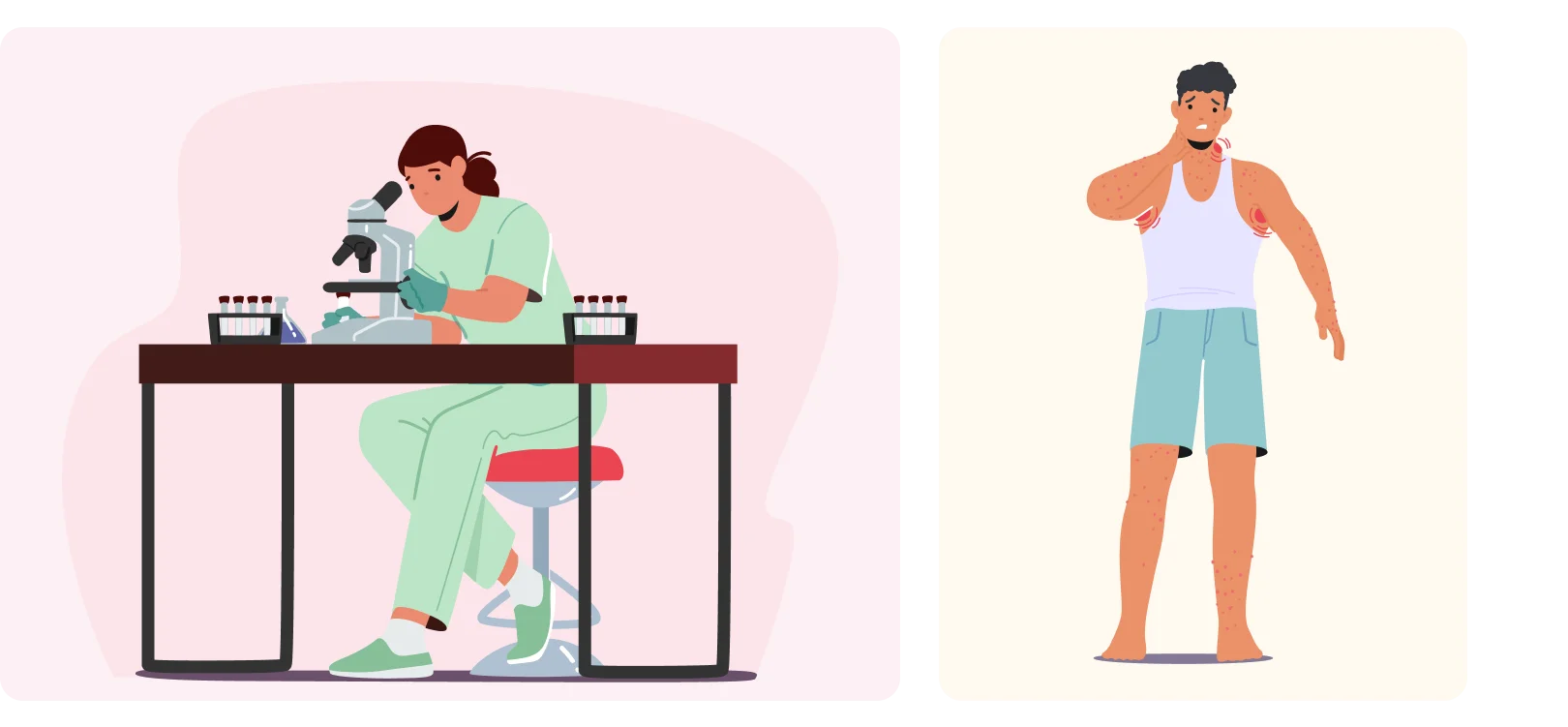Definition
Scabies and pubic lice (crabs) are two different types of parasitic infestations that affect the skin. Both conditions can lead to itching and discomfort in the genital area, but they are caused by different parasites and have distinct characteristics.
- Scabies is a highly contagious skin infestation caused by the Sarcoptes scabiei mite. The female mite burrows into the top layer of the skin, where it lays eggs, leading to an allergic reaction and intense itching.
- Pubic lice are tiny insects that feed on your blood and can live on body hair especially the pubic hair around the penis or vagina, but they are a different from head lice.

Causes
- Scabies is passed on by skin to skin contact and usually spreads across the whole body. It is caused by the female Sarcoptes scabiei mite burrowing into the top layer of skin, where it lays eggs, leading to an allergic reaction and intense itching.
- Pubic lice feed on blood and attach themselves to hair shafts, where they lay eggs (nits). They are primarily transmitted through sexual contact but can also spread through sharing contaminated bedding, towels, or clothing. The most common way to get pubic lice is through sexual activity.
Symptoms
- Scabies sufferers tend to have the following symptoms:
- Intense itching, especially at night in between the fingers, wrists, elbows, armpits and genital region
- Small, red, raised blisters, or thin, thread-like burrow lines on the skin
- Pubic lice sufferers tend to have the following symptoms:
- Intense itching in the genital area
- Tiny (2mm long) grey-brown, crab-shaped insects clinging to hair shafts
- White or yellowish specks (the eggs/nits) attached to hair close to the skin surface



















